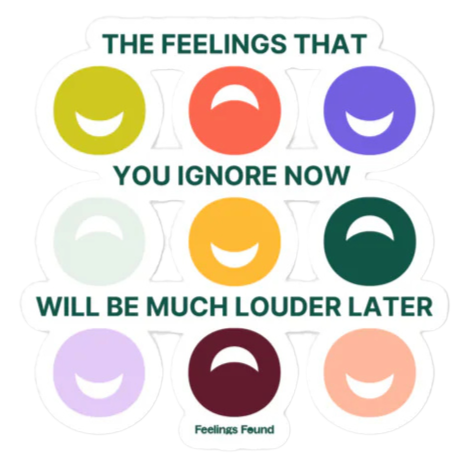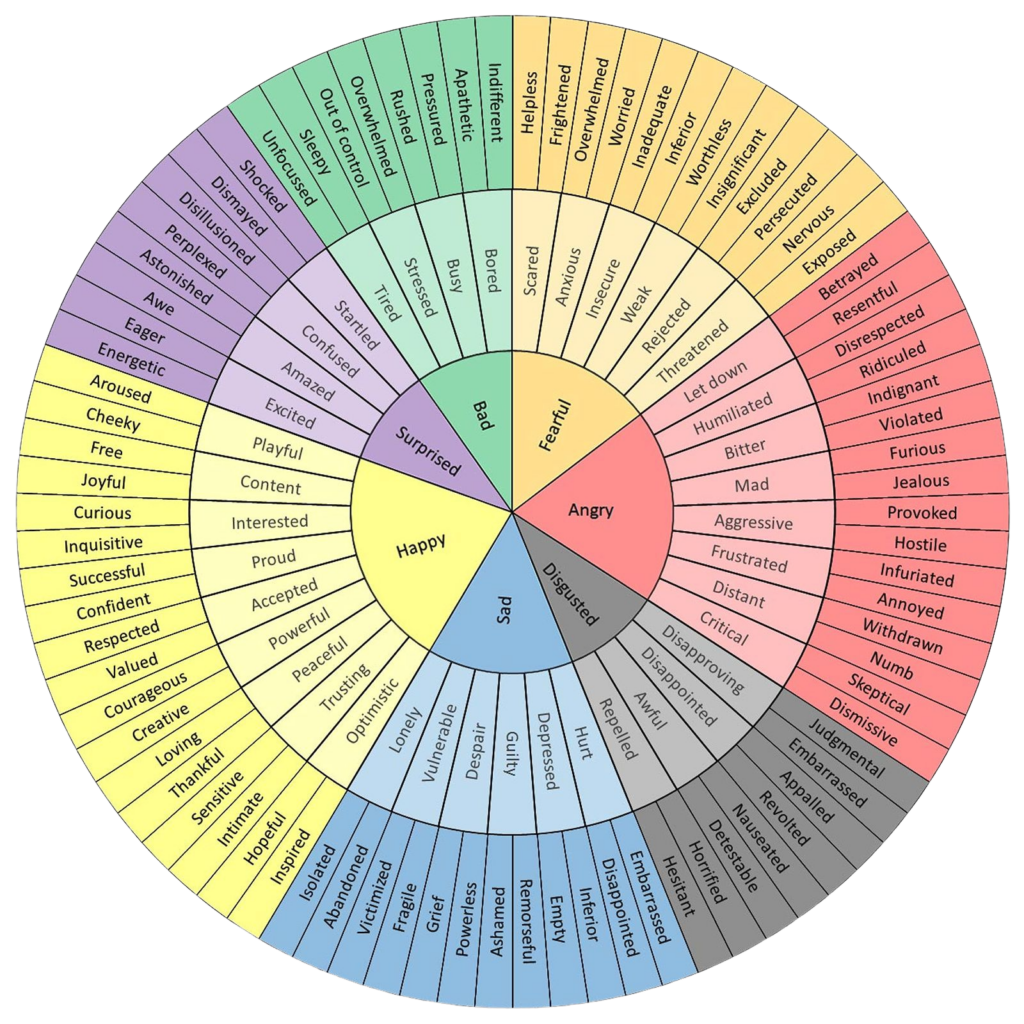Join Me on Instagram!
Let's Work Together
Counseling Services
Consultation for Clinicians
read more
About Kate
Also known as the founder of Among the Trees Counseling & Wellness, South Carolina native, Vermont transplant, and most likely to pick a green slope (or skip the skiing altogether in favor of a maple creemee).
The Power of Putting Feelings into Words
January 23, 2025

In an interview with Kate Bowler on her podcast, Everything Happens, psychologist Lisa Damour said the following:
“Language on its own reduces distress.”
She continued, “We have objective physiological measures that tell us that the mere utterance of a feeling word reduces the intensity of the emotion. Is kind of an extraordinary and actually in many ways truly magical thing.”
The research from which this conclusion came was aptly titled, “Putting Feelings into Words,” (Lieberman et al., 2007). In it, the researchers showed participants photographs of angry or fearful faces. Seeing these photos prompted increased activity in a region of the brain called the amygdala, the processing center for emotions.
Participants were then asked to label the emotion as either anger or fear, and attach a name to the face in the photo. When participants attached a feeling word to a photo, they saw a decreased response in the amygdala. When they attached a name to the photo, they didn’t see that same reduction.
In Lieberman’s words, “In the same way you hit the brake when you’re driving when you see a yellow light, when you put feelings into words, you seem to be hitting the brakes on your emotional responses.”
This allows the response to move from the amygdala, which is more likely to interpret the emotion as a threat and respond accordingly, to the frontal lobe, which allows you to start thinking about and processing the emotion.
Y’all. Y’all.
This is the magic of therapy.
When a feeling lives in our heads, it can take on a life of its own. But when a feeling is spoken, and all the more when it is witnessed and validated, it shifts. It loosens up and slows down. It ceases to be a threat to our rationality and relationships and instead has the opportunity to tell us what it knows. What it needs.
The “What” of Emotion Regulation
This process of identifying, understanding, and managing our emotional responses is called emotion regulation. While it might sound clinical, it’s actually something we do – or try to do – every day. Regulating your emotions is like being the gardener of your emotional landscape – some feelings need pruning, others need nurturing, and you learn which emotional plants need sun or shade, when to water them, and how to keep the whole garden in balance.
Another way to think of it would be as the mixing board operator of your emotional studio – adjusting different sliders and dials, never intending to silence any particular track but rather to create a balanced, harmonious mix where each emotion can be heard without overwhelming the others.
The “How” of Emotion Regulation
So what does effective emotion regulation look like in practice? While there’s no one-size-fits-all approach, research suggests a reliable formula: Notice + Name + Navigate.
First, we notice the emotion arising – perhaps as physical sensations like a tightening chest or racing thoughts. Then, we name it specifically. (Remember the power of language we just discussed!) Finally, we navigate it using tools that work for us.
There are several evidence-based strategies that can help us regulate our emotions:
- Deep breathing actually changes our physiological state, switching us from “fight or flight” to “rest and digest.” The simple act of taking only three deep breaths can create enough space to respond rather than react.
- Body scanning helps us notice where we’re holding tension and emotions physically, allowing us to address them with more focus and intentionality. Start at your toes and work your way up, noting any areas of tightness or discomfort.
- Journaling provides another way to “put feelings into words,” giving us both distance and clarity. Even five minutes of free writing can help us understand what’s really bothering us.
- And my favorite particularly powerful but surprisingly simple tool is the feelings wheel, which helps us move from vague feelings like “bad” to more specific emotions like “disappointed” or “overwhelmed.” Starting from the center with basic emotions, we can work our way outward to more nuanced descriptions, giving us that crucial specificity that helps reduce emotional intensity.
- I love this personal, portable feelings wheel from Feelings Found. They also have a Body Sensations Wheel and a Needs Wheel that are fantastic!
When we combine these tools with the understanding that naming our emotions actually changes our brain’s response to them, we create a powerful framework for emotional wellbeing. It’s not about never feeling difficult emotions – it’s about having the confidence that we can handle them when they arise.
Remember: emotions are information, not emergencies.
Each one has something to teach us, if we can be brave enough to look and create enough space to listen.
References
Lieberman, M. D., Eisenberger, N. I., Crockett, M. J., Tom, S. M., Pfeifer, J. H., & Way, B. M. (2007). Putting Feelings Into Words. Psychological Science, 18(5), 421-428. https://doi.org/10.1111/j.1467-9280.2007.01916.x


Be the first to comment